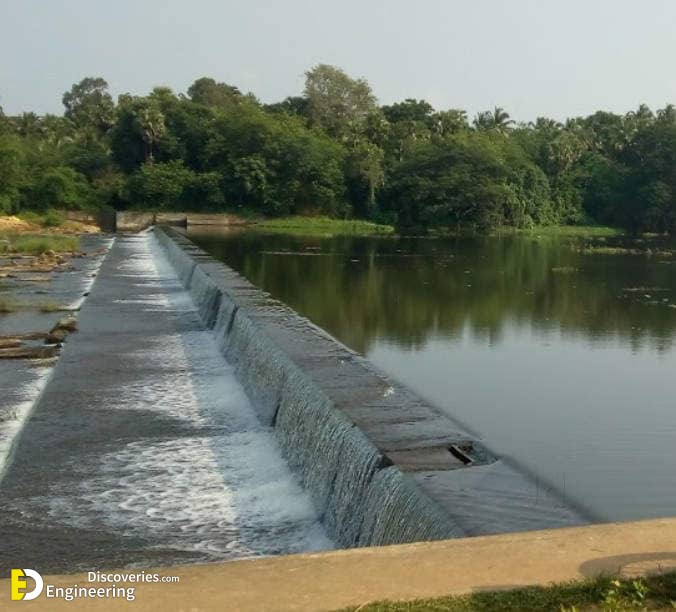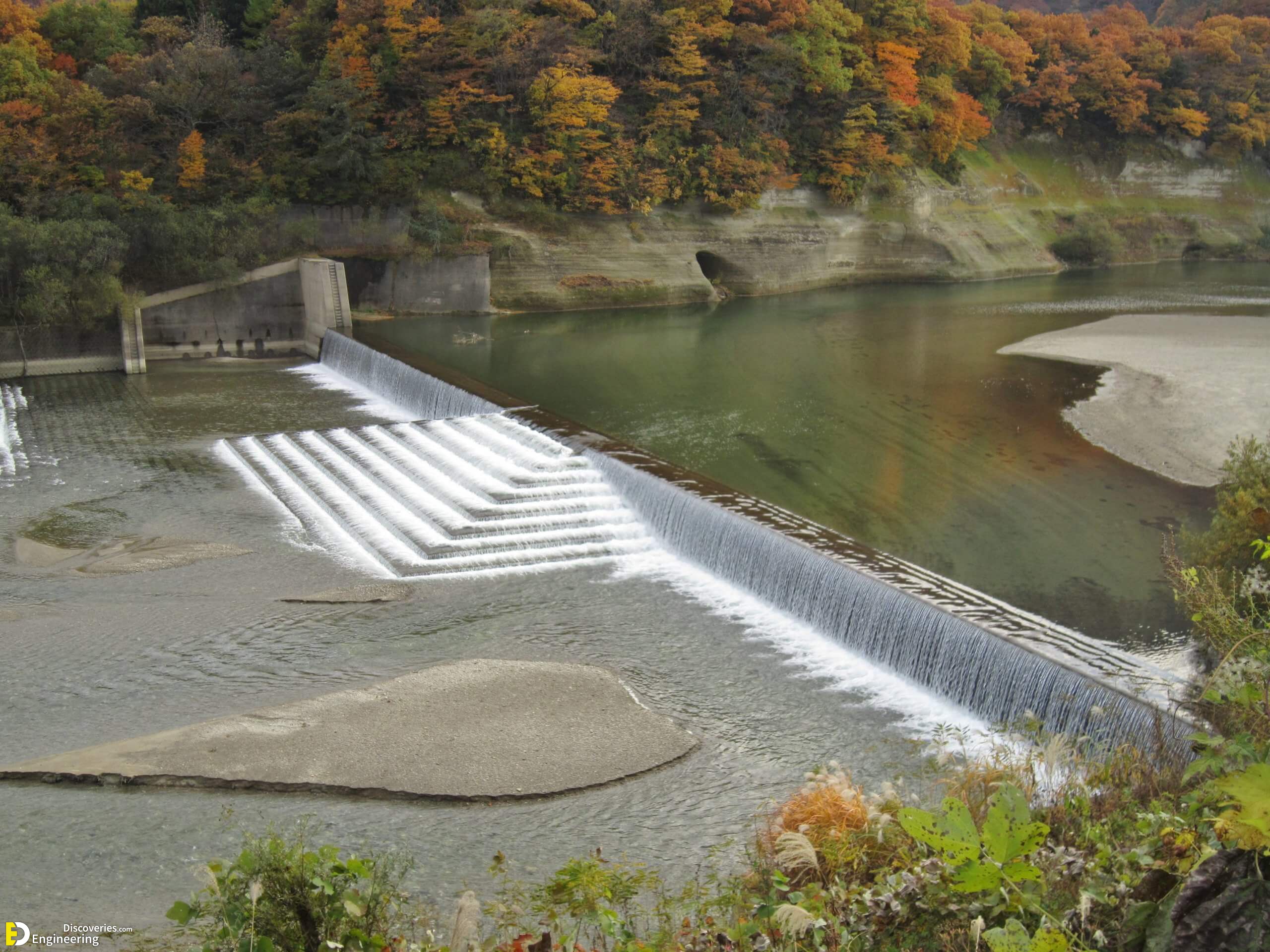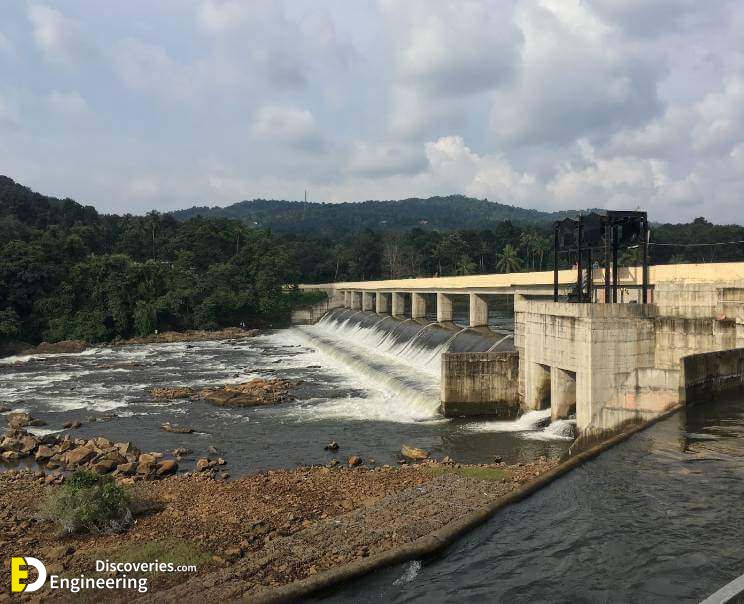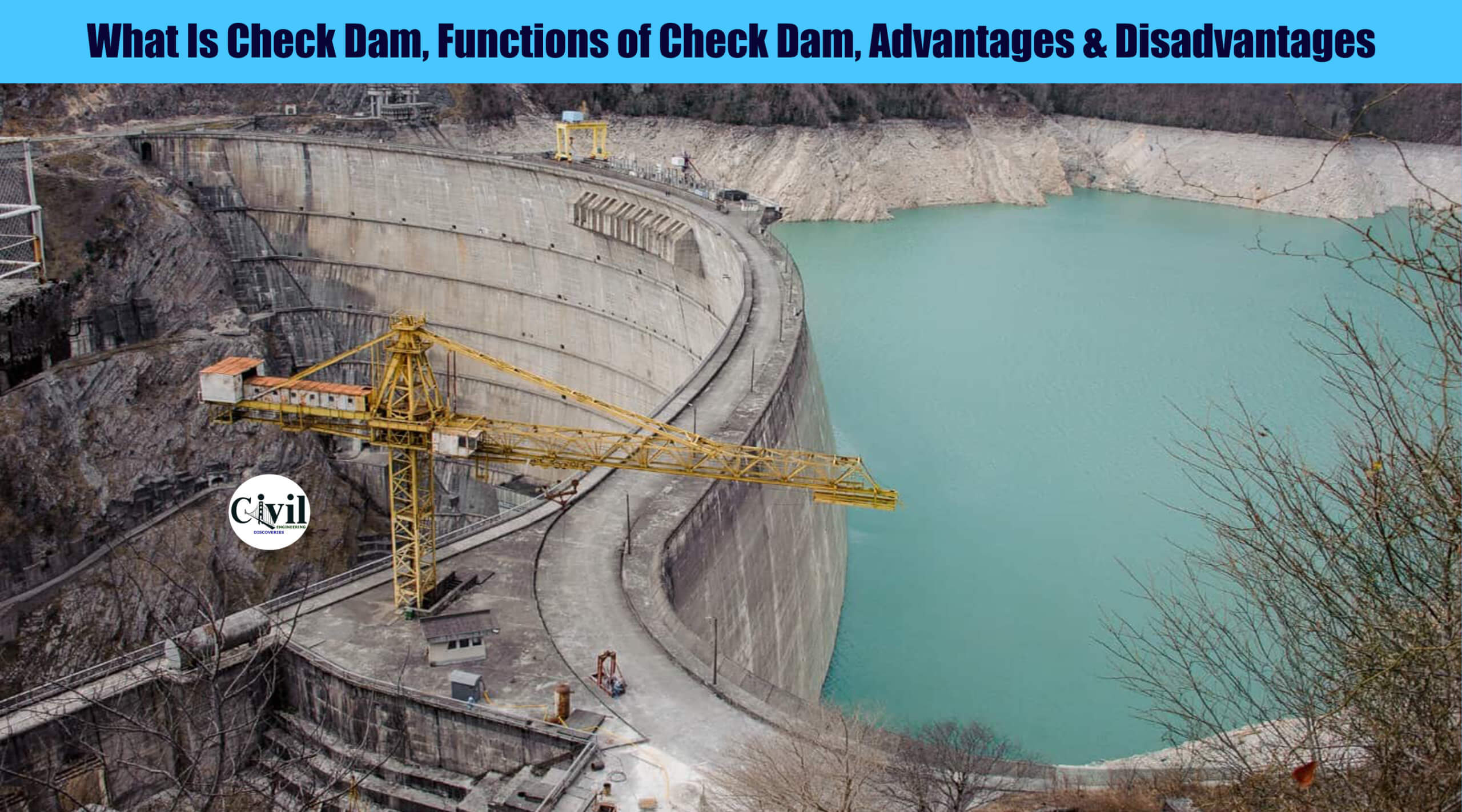 A check dam is a special type of engineering measure for soil conservation in erodible areas. It retains flood water and traps sediment. It consists of embankment and spillway. Some check dam consists of the only embankment.
A check dam is a special type of engineering measure for soil conservation in erodible areas. It retains flood water and traps sediment. It consists of embankment and spillway. Some check dam consists of the only embankment.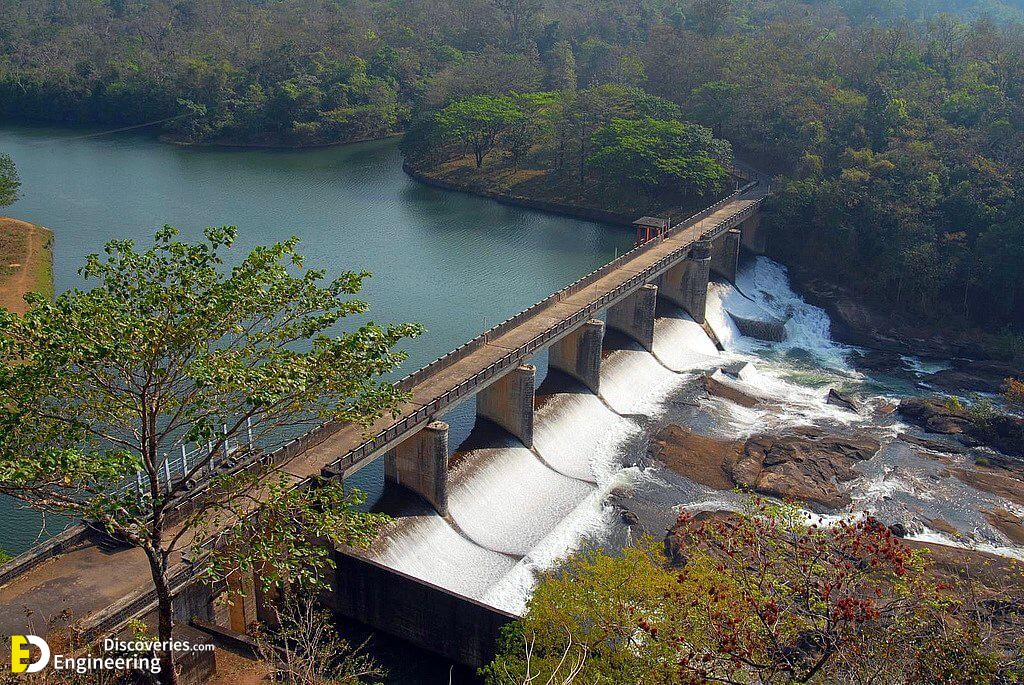

Functions of the Check Dam
A check dam is pre-designed and constructed to meet the following concept:-
1- To reduce the velocity of the water.
2- Raise the bed level and reduce the slopes in a gully by silting up and trapping the silt.
3- Support the unstable side slopes.
4- Promote the water percolation in the soil and conserve water for plant growth and also for stability banks.
Design Consideration of Check Dam
Design consideration includes the following points:-
1-Site selection
a-The site should be wide enough to provide high runoff.
b- The spillway has to be large enough with sufficient free-board to take expected maximum runoff. (concrete mortared rock dam must not exceed 8 m in height whereas the log crib dam must not exceed 2 m. The spacing of a dam for 2 m height in a 20-degree channel will be 12 m.)
c- It should be made at a straight and firm stream bed. It should not be made on a curve and junction of gullies or streams.
d- The foundation of the check dams should be rest on base rock.
e- The selection of the site is also restricted by the height of the structure. If the elevation difference between 2 sides is too high, 1 or more side have to be selected in between so that structural height will be limited.
2- Spacing
The spacing of check dams should be so placed that, the line joining the top of the lower check dam and the bottom of the successive upper check dam gives the gradient. This gradient will give a non-erosive velocity of flow. This gradient is known as a compensation gradient. For general practice, the compensation gradient is taken as 3 to 5% of the slope. The horizontal distance between successive check dams is given by
b=h*100/(So-Se)
where
b=spacing between two check dams
h=Height of check dam up to the notch
So=Existing bed slope in percentage
Se=Establishing slope of the bed in percentage
3- Number
The number of check dams required is determined from the following formula
number of check dams =(a-b)/H
where
b=Se*d’/100
d’=horizontal distance between first and last check dams
H=average height
Hydrological Aspect of Check Dam
Runoff estimate
The rational formula is the most commonly used method of the estimate of runoff.
The peak rate of runoff is calculated by using the following rational formula;
Q=CIA/360
Where
Q=Rate of runoff
C=Catchment coefficient or the coefficient of runoff
I=Intensity of runoff
A=Catchment area
Advantages of Check Dam
Some advantages of check dam are:
a- It provides irrigation facility.
b- It reduces flow velocity and helps in the protection of river banks.
c- Economical than other dam types.
d- It is simple to construct the check dam. So, no requirement of advance machines and technologies.
e- It helps in flood control.
f- It facilitates the production of electricity on a small scale.
Disadvantages of Check Dam
Some disadvantages of check dam are:
a. It causes a rise in the groundwater table.
b. Affects aquatic lives.
c. It has a limited life span and strength.
Design – Example
We have provided this design example in PDF Format for your ease. Download it and grab the knowledge.
Click Here To See How Are Many Forces Acting On A Dam Structure And Calculations?


